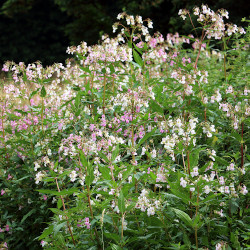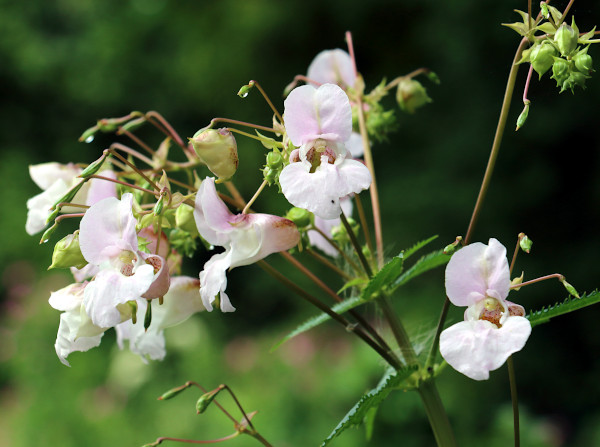
Take a walk along a local river or stream during the summer and cast your eye along the bank. You might well see a profusion of tall plants in white or purple flower. This would likely be the Himalayan balsam (Impatiens glandulifera), also known as Bobby Tops, a less-welcome relative of the Busy Lizzy plant. It looks striking but is, in fact, a bit of a menace.
The plant originates from – as the name suggests – the Himalayan mountains in south-central Asia. It was brought over to England, first to Kew Gardens by plant collectors in 1839, and from there, either by accident or design, it spread to the rest of the country.

The Himalayan balsam is a tall annual plant 1-2m in height with spear-shaped leaves which can have small glands on the leaf edges and larger glands where the leaf stalk meets the main stem. The glands produce copious amounts of sweet, sticky nectar which probably attracts pollinating insects to the large purple flowers. After pollination, the fruits that later develop explosively scatter hundreds of seeds about.
The plant likes to grow near to rivers, especially on the banks close to the water where they take over and exclude other plants becoming especially invasive. The plant is not as difficult to remove as that other invader, the Japanese Knot-weed but it can be controlled effectively especially if cut down or pulled up before seed dispersal.
Norfolk and its rivers has a particular problem with Himalayan balsam and river conservation bodies are keen to eradicate it through organised programmes including help from volunteers. This year’s weather has been especially good for the growth of the plant which is one reason it has become more noticeable. So if you want to help a conservation group such as the Norfolk Rivers Trust , get in touch with them.